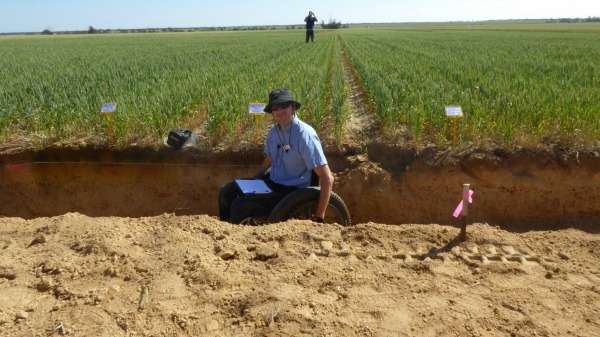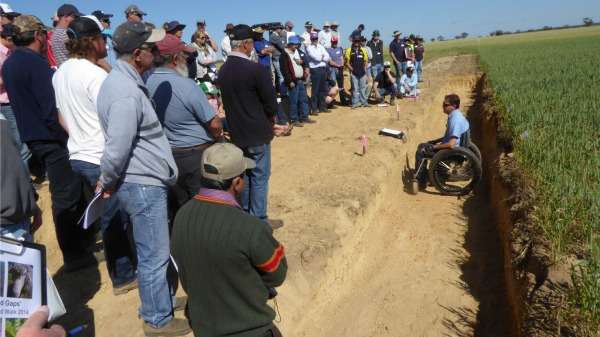Lime treatment tests crops and soil nutrients

Applying lime to acidic soils may offer a way to improve crops yield and boost soil nutrient availability, according to research in the Wheatbelt.
The five-year $2.6million Department of Agriculture and Food WA and Grains Research and Development Corporation project aims to provide updated guidelines for croppers to reflect changes in soil fertility.
Acidic soils inhibit plants' root growth and nutrient uptake.
Optimal pH levels, measured in a calcium chloride solution, are above 4.8 for subsurface soil and above 5.5 for topsoil, and maintaining soil pH is important for minimising production losses.
DAFWA principal research officers Craig Scanlan and Ross Brennan and technical officer Gavin Sarre began investigating interactions between soil pH levels, fertiliser applications, nutrient uptake and grain yield response in July 2012.
Six long-term trial sites were established in Wongan Hills, Merredin, Goomalling and Dalwallinu, as well as Northam, northeast of Perth, and Doodlakine, east of Perth.
Lime treatments were applied at intervals of 0, 2.5 and 5 tonnes per hectare on the sites, which were left for three years to allow reaction and changes in soil pH to occur.
Researchers will conduct further plot trials over the growing season from April until harvest in November this year and next year before the project finishes in June 2017.

Dr Brennan says they are primarily concerned with the effect of soil pH on soil phosphorous supply and grain yield response of wheat to phosphorous fertiliser to provide updated management options for farmers.
"We examined the role of cultivation and the incorporation of lime on the sensitivity of grain yield to omitting nitrogen, phosphorous, potassium and sulfur fertiliser," he says.
Preliminary results indicate reducing expenditure on fertiliser to help pay for the cost of lime and cultivation is feasible where the existing soil fertility is good.
"At our Dalwallinu site, we found that grain yield was less sensitive to reducing phosphorous fertiliser rates after incorporating lime compared to the no-till control," Dr Brennan says.
Their findings show a slight trend towards more efficient phosphorous fertiliser use in wheat for soils with pH levels above 6 compared with those with pH levels below 4.8.
Dr Brennan says this indicates farmers who invest in incorporating lime on acidic soils can improve their yield potential and soil nutrient availability.
"However, there are risks associated with cultivation, such as wind erosion, which need to be included in the decision-making process," he says.
More information: "Effect of soil pH and crop sequence on the response of wheat (Triticum aestivum) to phosphorus fertiliser." Crop and Pasture Science 66(1) 23-31 dx.doi.org/10.1071/CP14192
Provided by Science Network WA




















